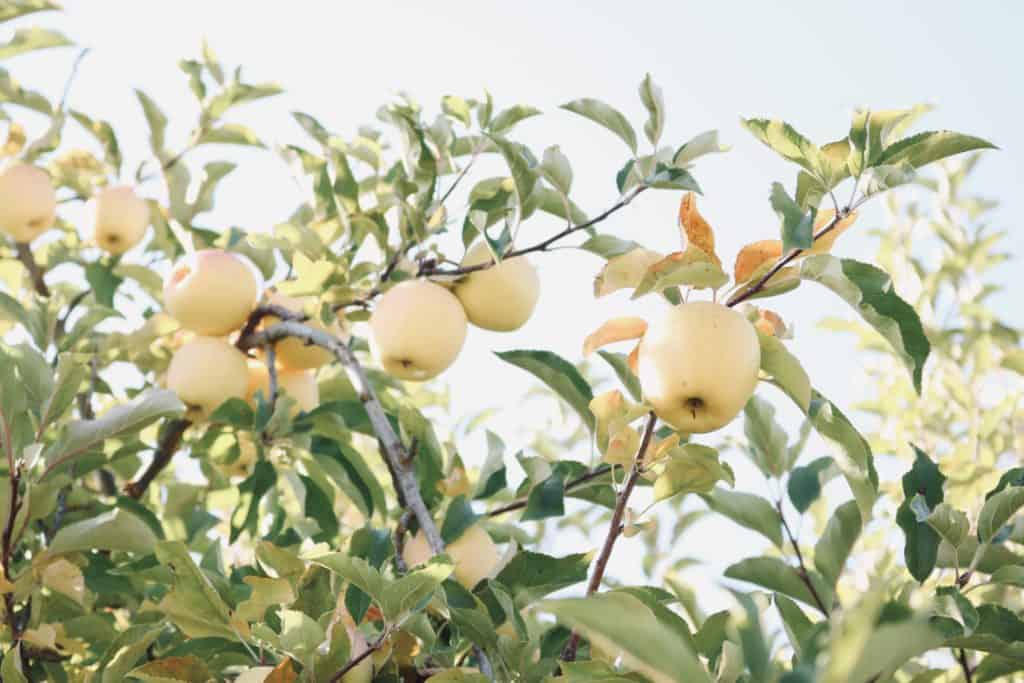First published: 29 December 2020 @ 8:53 pm

There are a whole range of fruits that can be grown at home in Singapore.
Most fruits can be grown in Singapore, even if you live in a condominium. You may need to grow them in pots or on a windowsill, but it can be done.
In this post, I’ll show you the different types of fruits you can grow at home in Singapore. And I’ll show you where to buy them from.
In general, there are two types of fruit trees: evergreen and deciduous. Deciduous trees lose their leaves during winter whereas evergreen trees keep their leaves throughout the year. They include avocado and pomegranate trees which are commonly grown as indoor plants. They require pruning during summer months for better growth and fruit production. It is best to prune them during February or March when they are still dormant because they will bleed sap if pruned during summer months.
However, if you are new to gardening, it’s better to start with an evergreen fruit tree.
Here are the top 5 fruits that you can grow at home in Singapore, whether indoor or outdoor.
1) Passionfruit (Passiflora edulis)
Description: Passionfruit is a tropical vine native to Brazil and Paraguay. It’s a popular ornamental plant grown for its decorative leaves and flowers. It is also grown for its delicious fruit—a favourite for many Singaporeans. Unlike other tropical fruits like durian and mangosteen, passionfruit can be consumed when it’s ripe or unripe. The taste is often compared to that of mangoes but with a tart flavour.
When passionfruit is unripe, it has a sour taste and is best used as a vegetable in salads or cooked dishes. The fruit contains high amounts of vitamins A and C as well as folate and potassium. Passionfruit can be eaten fresh or used in jams, ice-creams and desserts like cakes and pastries. It can also be used to make juice which pairs well with rum! Growing conditions: Passionfruit vines need plenty of sun to produce fruits. They are frost-sensitive so need to be sheltered from winter frost. The fruit is best picked fresh from the tree when ripe.
Passionfruit plants are very vigorous and can grow up to 6 meters in height. To keep the plant under control, prune the vine regularly especially during flowering periods. Best varieties: ‘Cupply’, ‘Natal Queen’ or ‘White Wonder’. More information on growing passionfruit can be found on the National Parks Board website here.
Where to buy: You can find these variety of passionfruit seedlings at local nurseries like Harvey Norman Nursery and Plantation Garden Nursery (Pasir Panjang). Places like Amazon sells passionfruit seeds too but you have to wait for them to grow before you can harvest any fruits.
2) Guava (Psidium guajava)
Description: Guava is a small tropical tree native to Brazil and Peru, with leaves similar in shape and colour to that of the bay leaf. It is a popular ornamental plant grown for its decorative flowers, scent and fruit—which tastes similar to that of pears! The fruit is highly nutritious with high levels of vitamin C and calcium. It is often used to make jams, jellies and dried fruit. The mature fruit can be eaten raw, while the unripe fruit can be cooked in savoury dishes like curries and soups.
Guava trees are frost-sensitive and do not do well in cold countries like Singapore. They prefer tropical climates where they will grow best in full sun to partial shade. Best variety: ‘Manila’ or ‘Safari’ (below). More information on growing guava can be found on the National Parks Board website here.
Where to buy: You can find these variety of guava seedlings at local nurseries like Harvey Norman Nursery and Plantation Garden Nursery (Pasir Panjang). Places like Amazon sells guava seeds too but you have to wait for them to grow before you can harvest any fruits.
3) Longan (Dimocarpus longan)
Description: Longan is a thorny tropical tree native to South East Asia, Indonesia and China, with large glossy leaves that grow up to 10cm long. Unlike other fruits, longan fruits are not juicy since they contain dry pulp surrounding one seed. The pulp is sweet and tastes similar to that of lychees but with a more floral fragrance.
The fruits are usually eaten fresh or made into jams. Longan trees require plenty of sun and warm temperatures in order to grow effectively. They are prone to frost damage hence you need to protect them from winter storms. Best variety: ‘Hwang Tai’ (below). More information on growing longan can be found on the National Parks Board website here.
Where to buy: You can find these variety of longan seedlings at local nurseries like Harvey Norman Nursery and Plantation Garden Nursery (Pasir Panjang). Places like Amazon sells longan seeds too but you have to wait for them to grow before you can harvest any fruits.
4) Starfruit (Averrhoa carambola)
Description: Starfruit, also known as carambola, is a tropical tree native to Southeast Asia, India and Sri Lanka. It is also considered an ornamental plant grown for its attractive star-shaped fruit covered with waxy ridges and spines. The fruit has a sweet taste with sour undertones like that of lemons! Starfruit is rich in vitamin C and potassium as well as dietary fibre. It is often used to make jams, jellies and dried fruit.
The fruit can be eaten fresh or cooked in recipes like curries, soups, stir-fries and stews. Starfruit trees require plenty of direct sunlight to produce fruits.
Best variety: ‘Hak Ip’ (below). More information on growing starfruit can be found on the National Parks Board website here.
Where to buy: You can find these variety of starfruit seedlings at local nurseries like Harvey Norman Nursery and Plantation Garden Nursery (Pasir Panjang). Places like Amazon sells starfruit seeds too but you have to wait for them to grow before you can harvest any fruits
